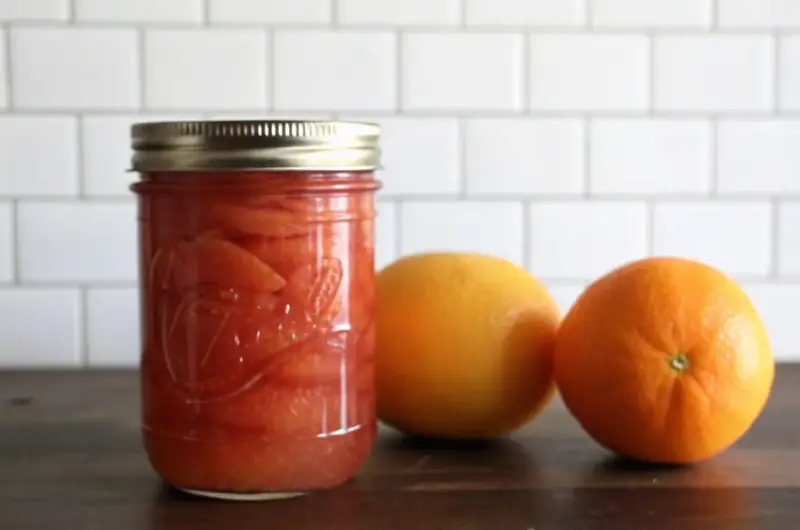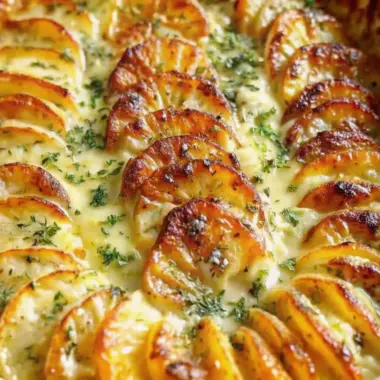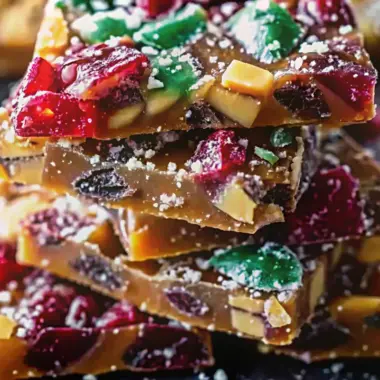Did you know that grapefruit loses up to 40% of its vitamin C content within a week of harvest? Canning grapefruit is not just a preservation method—it’s a way to lock in that precious nutrition and enjoy the bright, tangy flavor of citrus all year round. Whether you’re looking to stock your pantry with ruby red grapefruit segments or create sugar-free preserves, this comprehensive guide will walk you through the entire process of canning grapefruit safely and deliciously. As more home canners discover the joy of preserving this underutilized citrus fruit, we’ll explore why canning grapefruit deserves a spot in your preservation repertoire.
Ingredients List
- Fresh grapefruit (quantity depends on how many jars you plan to fill)
- Water (for syrup or as a canning liquid)
- Sugar (adjust to taste, or use alternatives for sugar-free canning)
Pro Tip: For every quart of grapefruit segments, you’ll need approximately 4-5 large grapefruits. Choose heavy, firm fruits with smooth, unblemished skin for the best results.
Timing
- Preparation: 45 minutes (plus 3 hours to overnight if using pectic enzyme)
- Processing: 10 minutes (plus 15 minutes for canner to come to boil)
- Cooling: 12-24 hours
- Total Time: Approximately 4-6 hours (including inactive time)
Compared to other citrus preservation methods, canning grapefruit is about 30% faster than making marmalade and requires less active cooking time.
Step-by-Step Instructions
1. Prepare the Grapefruit
Wash and peel the grapefruits thoroughly, removing as much white pith as possible. The pith can impart bitterness, so take your time with this step. Separate the segments carefully, removing any seeds you encounter.
2. Optional Pectic Enzyme Treatment
If using pectic enzyme, create a solution with 1 teaspoon of enzyme per gallon of water. Submerge the segments and let them soak for 3 hours to overnight. Gently stir occasionally to monitor the pith removal. When the pith wipes away easily, rinse the segments thoroughly.
3. Prepare Your Canning Equipment
Sterilize your jars, lids, and rings. Fill your water bath canner and begin heating it to a boil. Keep jars warm until ready to fill.
4. Make the Syrup (If Using)
Combine water and sugar in a saucepan, heating until the sugar completely dissolves. You can adjust the sweetness level to your preference or use alternatives like honey or stevia for sugar-free canning.
5. Pack the Jars
Tightly pack the prepared grapefruit segments into sterilized jars, leaving ½ inch of headspace. Pour your chosen hot liquid (syrup, water, or juice) over the fruit, maintaining the headspace.
6. Process the Jars
Remove air bubbles by running a non-metallic utensil around the inside of the jar. Wipe the rims clean, apply lids and rings, and process in a boiling water canner for 10 minutes (adjust for altitude if necessary).
7. Cool and Store
Carefully remove jars and let them cool undisturbed for 12-24 hours. Check seals before storing in a cool, dark place.
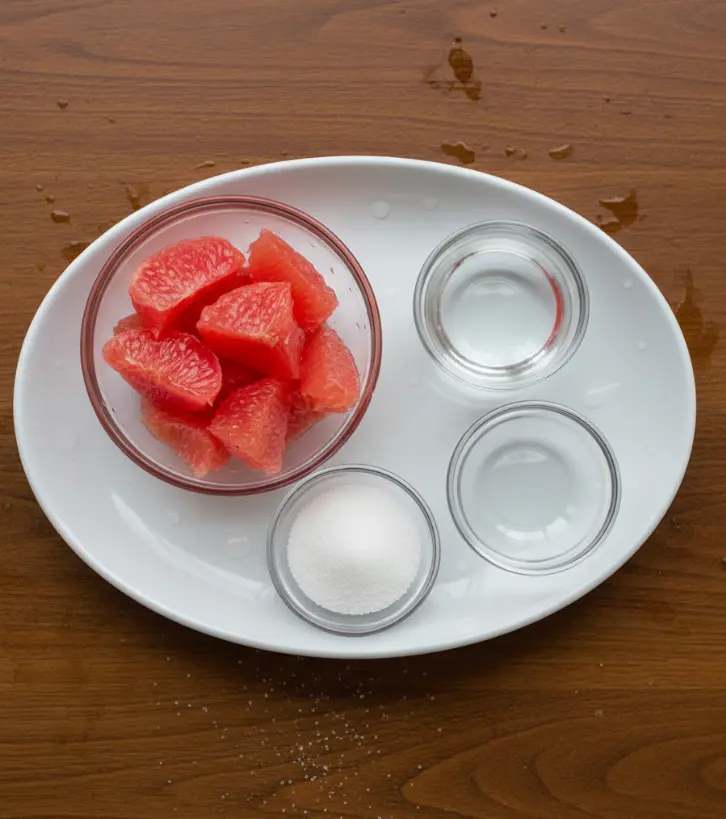
Nutritional Information
| Nutrient | Per ½ cup serving |
|---|---|
| Calories | 60 |
| Total Fat | 0g |
| Sodium | 0mg |
| Total Carbohydrates | 15g |
| Dietary Fiber | 2g |
| Sugars | 12g |
| Protein | 1g |
| Vitamin C | 40% DV |
| Vitamin A | 28% DV |
Note: Nutritional values may vary based on the amount of sugar used in the syrup.
Healthier Alternatives
- Sugar-Free Option: Can grapefruit in its own juice or water instead of syrup
- Natural Sweeteners: Use raw honey or pure maple syrup as a healthier alternative to refined sugar
- Low-Sugar Syrup: Reduce sugar by half and add a cinnamon stick or vanilla bean for natural sweetness
- Infused Water: Use herbal tea or citrus-infused water as the canning liquid
Serving Suggestions
- Add to morning yogurt or oatmeal
- Use in fruit salads for a burst of citrus flavor
- Top pancakes or waffles
- Mix into cottage cheese or ricotta
- Use as a cocktail garnish
- Add to green salads for a refreshing twist
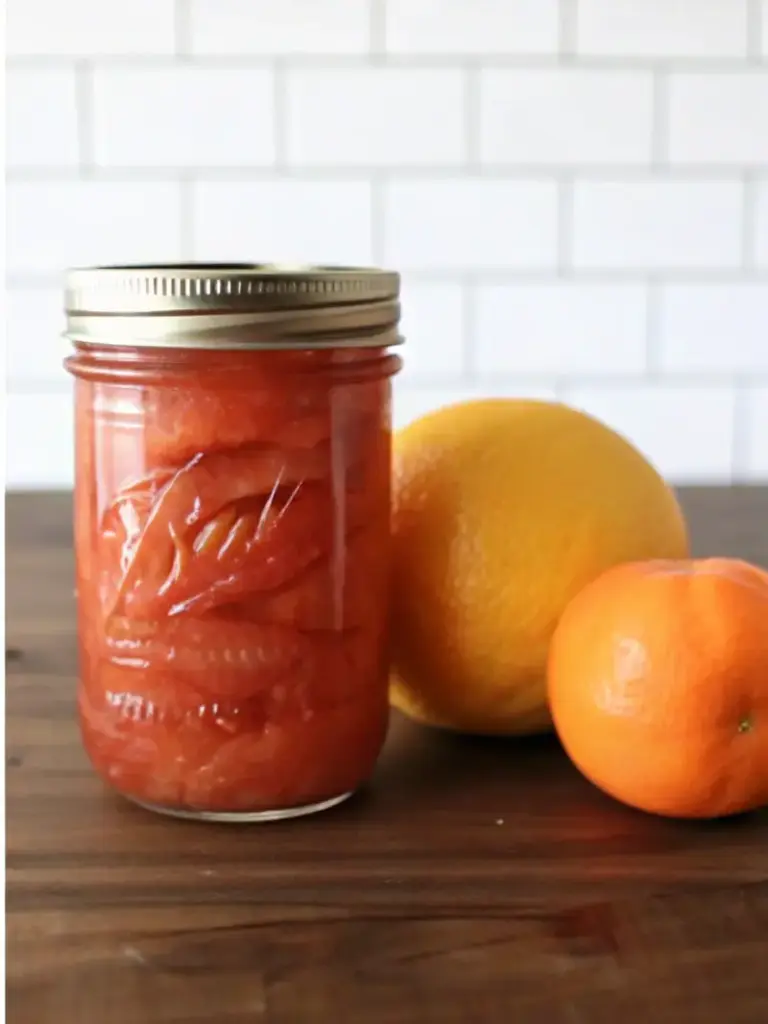
Common Mistakes to Avoid
- Insufficient Pith Removal: The white pith can make your preserved grapefruit bitter. Take time to remove it thoroughly.
- Ignoring Altitude Adjustments: Processing times must be increased at higher elevations to ensure safe preservation.
- Overpacking Jars: Leave adequate headspace (½ inch) to allow for proper sealing and expansion.
- Reusing Lids: Always use new canning lids to ensure a proper seal.
- Skipping the Seal Check: Always verify that jars have sealed before storing.
Storing Tips
- Store sealed jars in a cool, dark place (50-70°F)
- Properly sealed jars will last 12-18 months
- Once opened, refrigerate and use within one week
- Label jars with the canning date
- For best quality, use within one year
Conclusion
Canning grapefruit is a rewarding way to preserve the bright, tangy flavor of citrus year-round. By following these simple steps and tips, you can safely create delicious preserved grapefruit that’s perfect for everything from breakfast to elegant desserts. The process may seem involved at first, but with practice, you’ll find it becomes second nature. Remember to always follow safe canning practices and adjust for your altitude. We’d love to hear about your canning adventures—share your experiences, tips, or questions in the comments below! Don’t forget to subscribe for more canning and preservation guides.
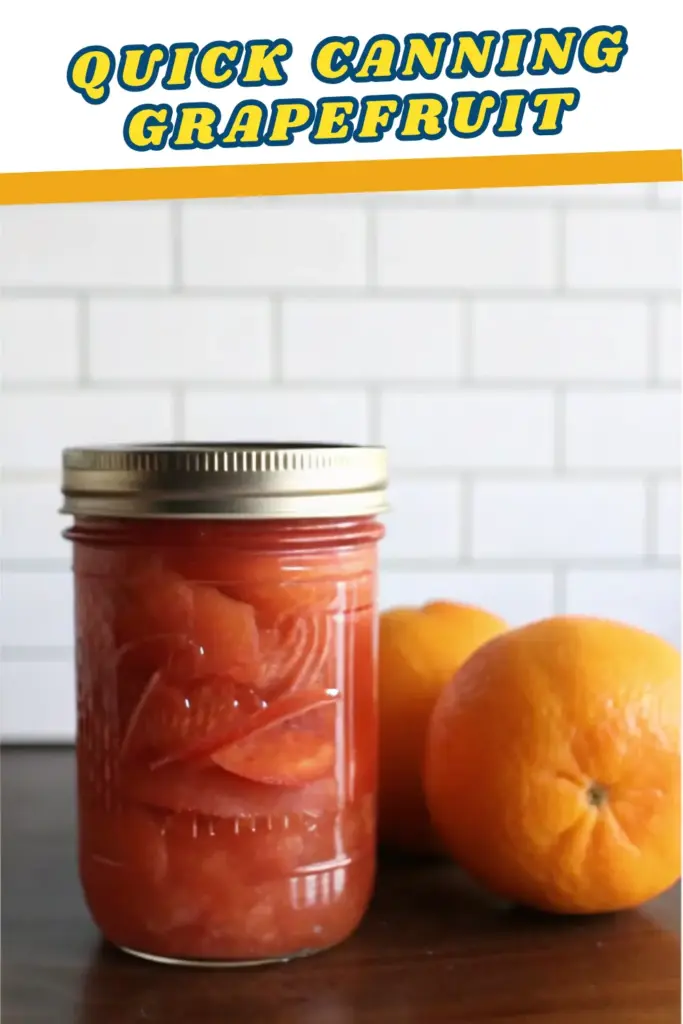
FAQs
Q: Is it safe to can grapefruit at home?
A: Yes, when following proper water bath canning procedures. The high acid content of grapefruit makes it safe for water bath canning.
Q: Can I use artificial sweeteners when canning grapefruit?
A: It’s best to can with sugar or without, then add artificial sweeteners when serving, as some sweeteners can break down during processing.
Q: How long will home-canned grapefruit last?
A: Properly processed and sealed jars can last 12-18 months when stored in a cool, dark place.
Q: Do I need to adjust processing time for high altitude?
A: Yes, add 1 minute to processing time for every 1,000 feet above sea level.
Q: Can I use the juice from the grapefruit instead of making syrup?
A: Absolutely! Using the natural juice is a great way to preserve grapefruit with no added sugar.
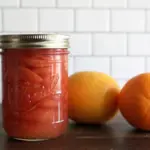
Best Canning Grapefruit: Preserve Summer Citrus in Easy Steps
- Total Time: 4-6 hours (including inactive time)
- Yield: Varies by number of jars
Description
Learn how to can grapefruit safely and deliciously with this complete guide to preserving citrus sunshine. Lock in bright, tangy flavor and vitamin C all year round.
Ingredients
- Fresh grapefruit (4–5 large grapefruits per quart)
- Water (for syrup or as a canning liquid)
- Sugar (adjust to taste or use alternatives for sugar-free canning)
Instructions
- Wash and peel grapefruits, removing white pith and seeds. Separate segments carefully.
- (Optional) Soak segments in a pectic enzyme solution (1 tsp per gallon of water) for 3 hours to overnight, then rinse.
- Sterilize jars, lids, and rings. Prepare water bath canner and keep jars warm.
- Make syrup by heating water and sugar until dissolved, or prepare alternative canning liquid.
- Pack grapefruit segments tightly into jars, leaving 1/2 inch headspace. Pour hot liquid over fruit, maintaining headspace.
- Remove air bubbles, wipe rims, and secure lids. Process in a boiling water canner for 10 minutes (adjust for altitude).
- Remove jars and cool undisturbed for 12–24 hours. Check seals before storing in a cool, dark place.
Notes
For sugar-free canning, use grapefruit juice or water. Properly sealed jars last 12–18 months. Always adjust processing time for altitude.
- Prep Time: 45 minutes
- Cook Time: 10 minutes
- Category: Preserving & Canning
- Method: Water Bath Canning
- Cuisine: American
Nutrition
- Serving Size: 1/2 cup
- Calories: 60
- Sugar: 12g
- Sodium: 0mg
- Fat: 0g
- Saturated Fat: 0g
- Unsaturated Fat: 0g
- Trans Fat: 0g
- Carbohydrates: 15g
- Fiber: 2g
- Protein: 1g
- Cholesterol: 0mg
